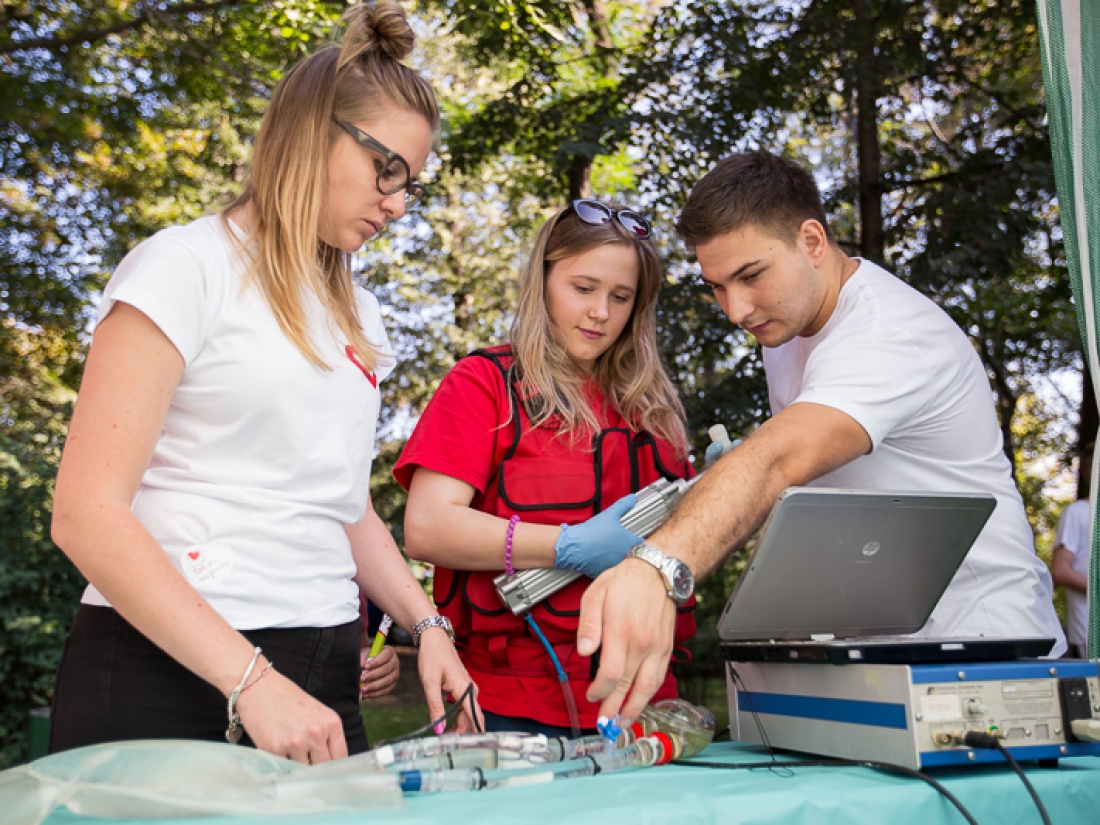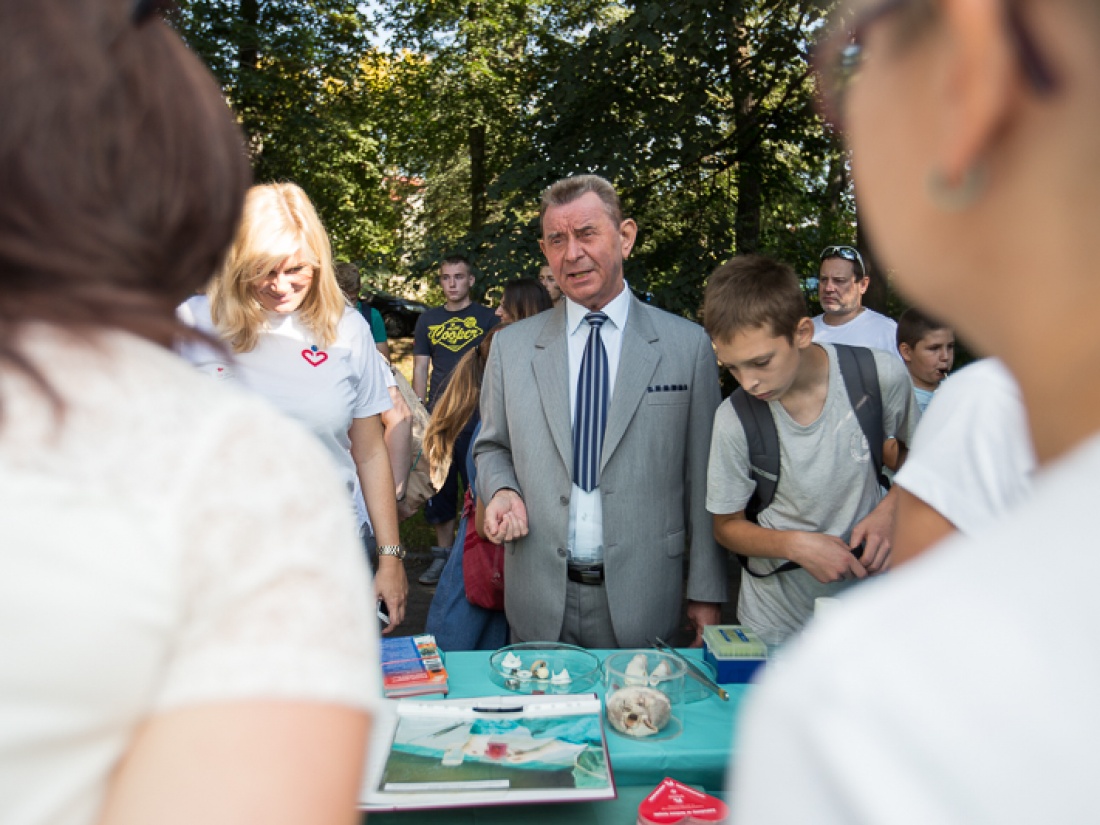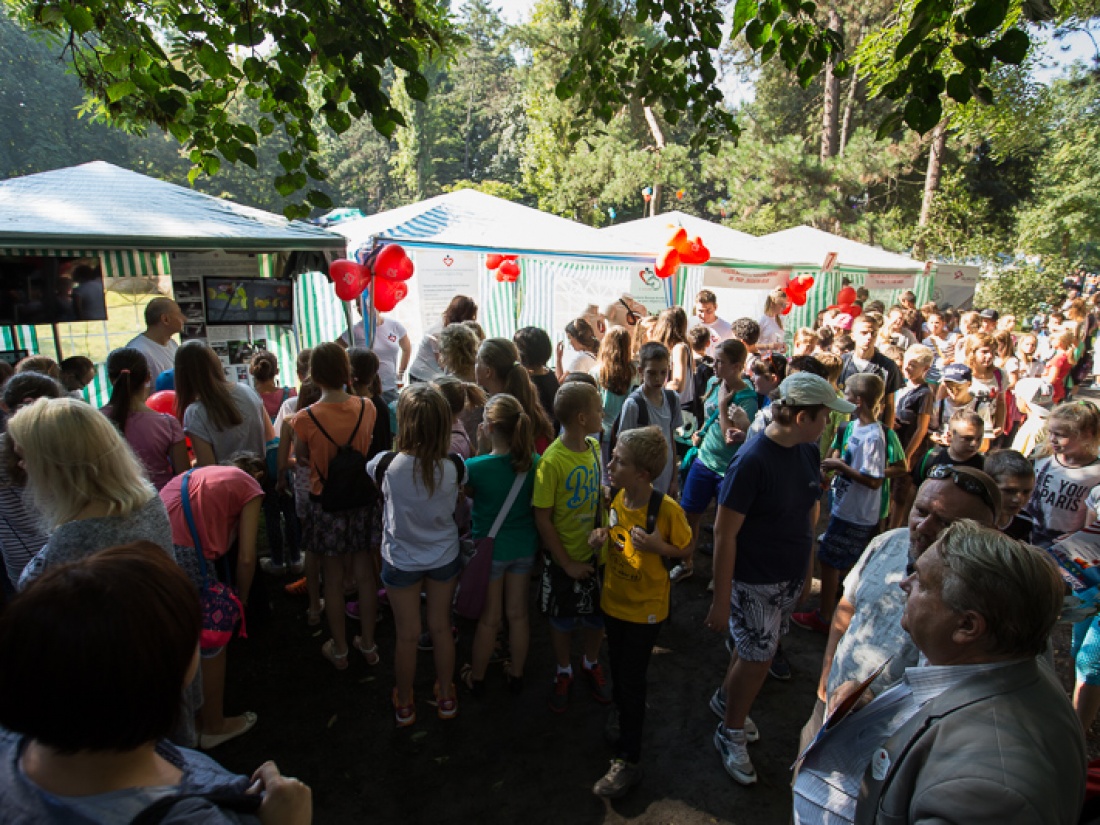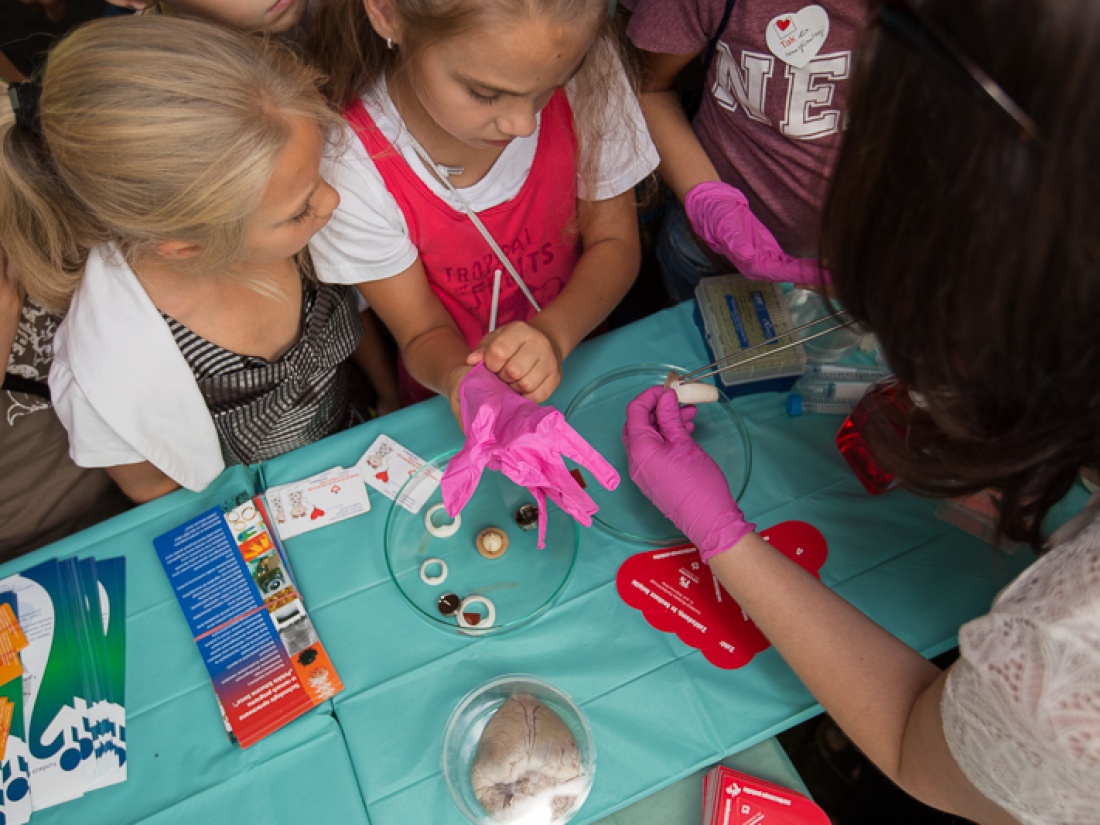Recent years of studies devoted to the creation of an infallible biological prosthesis of the heart valve belong to tissue engineering. Scientists unanimously claim that restoration of the life of the valve will secure its functionality for a longer period. Within the scheme of the project entitled ‘New methods of preparing biological valves’ a prototype of an autological valve is being developed, i.e. a biological heart valve obtained via the method of tissue engineering, in which an acellular or biodegradable scaffold of the prosthesis will be covered with the patient’s own cells (isolated from the bone marrow).Such a valve would be free from the complications likely to occur when contemporary valve prostheses are used (frequent calcification, inflammatory reactions, patients’ higher susceptibility to infections, the necessity of administering anticoagulants, low durability, etc.).
The project assumes using human tissues as a material for the valve. Nevertheless, limitations relating to the availability of human material incline to work simultaneously on the development of a method of creating valve bioprostheses based on zoonotic (xenogenic) material, subjected to chemical preservation with compounds which are non-toxic for living cells. It will allow to create advanced heart valve prostheses, which thanks to the possibility of the alternative use of zoonotic tissues will be able to be broadly applied.
During the project implementation a number of tests were performed so as to evaluate biological properties of the valves. Histological tests allowed to assess to what extent modification of tissues, relating – without limitations – to the enzymatic method of cell removal, may have its effect on their structure. Biomechanical and haemodynamic tests aimed to determine whether and to what extent the tissue fulfils its mechanical function after modification. A crucial role was also fulfilled by studies the goal of which was to determine the conditions of growing cells after their isolation, and the parameters allowing to differentiate cells isolated from the bone marrow, as well as to determine e.g. their functional features. A system of a bioreactor was developed, allowing to grow cells in dynamic conditions with a set flow, along with a number of new methods of chemical preservation of tissues, with the application of chemical compounds (e.g. from the group of the so-called flavonoids) which do not exhibit cytotoxicity. Promising research results will constitute the foundation for formulating an application to the bioethics committee for a permission to conduct tests on animals. All effects reached within the scheme of the project are subject of relevant patent applications.
Implementation of the project led to cooperation with the University in Leipzig (Prof. A. Bader), with the academic centre in Gdańsk (Piotr Siondalski, Ph.D. M.D.), and with the Ship Design and Research Centre in Gdańsk (Leszek Wilszyński, Ph.D).
The constant disproportion between the number of donors and that of potential recipients constitutes a crucial limitation affecting the use of human tissues as a material for creating heart valve prostheses. For this reason zoonotic tissues seem to be an alternative in this respect. In this case, liquidation of cells by means of enzymatic and chemical methods in such tissues causes the removal of most of them, although it also poses a risk that some cells or their parts will remain, constituting a source of antigens. Therefore, in valve prostheses the aim is to use zoonotic tissue deprived of reactive antigens, as it would stimulate an immunological reaction of the human body much less, which in turn would translate into the increase of the durability of the bioprostheses applied. In this respect, breeding transgenic animals for the purposes of tissue engineering gains special significance and justification. Since the problem of degradation and loss of functions of valve bioprostheses is particularly intense in children and young patients, it seems that this group of recipients could benefit the most from the proposed solutions.
The goal of the project is to develop methods of isolation and differentiation of stem cells which could be used in the regeneration of a damaged cardiac muscle, in procedures enhancing the systolic function of the heart. The project is implemented in the consortium with the Silesian Centre for Heart Diseases in Zabrze and the Cancer Centre in Gliwice. Cardiac stem cells are located in the cardiac muscle. Probably, unlike other stem cells, they pose a lower risk of neoplasms or risk of differentiating into another, undesirable type of cells. Therefore, the chance that they will form cells of the cardiac muscle, new blood vessels, and not e.g. renal cells, is better.
In 2010 the group of sponsors of our Foundation obtained yet another member, the Upper Silesian Gas Distribution Company (Górnośląska Spółka Gazownictwa, Sp. z o.o.) in Zabrze. The company authorities decided to support our research on a new generation of heart valve prostheses. The valve is to be applied in the treatment of congenital and acquired heart diseases in children and adults. Thanks to the funds allocated to this purpose, the Foundation’s research facilities were enriched with two unique devices facilitating the works conducted. In 2011 in the Bioengineering Laboratory of our Foundation Poland’s first apparatus for automatic modification of heart valve prostheses was constructed. The device allowed to control the application of polyelectrolytes facilitating the process of seeding cells on heart valve prostheses. Its use opened up another stage of in vitro tests devoted to the development of a new generation of hearth prostheses.
In 2012, on the other hand, a device was designed which much facilitates and automates the process of cell seeding and culture on heart valve prostheses. The presentation of the device was attended by representatives of the Sponsor and the authorities of the Foundation.
6. Wilczek P., Nożyński J., Rozentryt P., Zembala M., 2002. Pooperacyjna plazmafereza u pacjentów immunizowanych po OHT. Kardiologia Polska. Tom 57, Suplement II:200
7. Wilczek P., Szydłowska I., Łotysz D., Religia Z. Analysis of cell viability after cryopreservation proces using flow cytometry. 3 rd European Conference on Engenering and
Medicine. 30 kwietnia- 3 maj 1995 Florencja. streszcz. str. 366
8. Wilczek P., Szydłowska I., Łotysz D., Religa Z. Nowe zastosowania techniki cytofotometrii przepływowej i hodowli tkankowych. XXX Konferencja Polskiego Towarzystwa
Histochemików i Cytochemików. 7-9 września1995 Wrocław. streszcz. str. 118
9. Wilczek P., Szydłowska I., Łotysz D., Religa Z. White blood cells and platelet activation during extracorporeal circulation. Fourth International Symposium on Clinical
Immunology. 22-25 czerwca 1997 Amsterdam. streszcz. str. 301
10. Religa Z., Wszołek J., Wilczek P., Nożyński J., Pawlus-Łachecka L., Sakiel S., Falkus J., Sajdak Z., Ocena alloprzeszczepów skóry ludzkiej, konserwowanych w glicerolu,
zamrażanych w niskich temperaturach i wyjaławianych radiacujnie. Kongres Oparzenia. 4-6 czerwca 1998 Poznań.
11. Kania A., Wilczek P., Moskal K., Beck E., Termiczna Analiza Różnicowa w Badaniach Tkanek Kolagenowych. IX Konferencja – Biomateriały w Medycynie i Weterynarii.
26-27 października 1998 Zakopane. Streszcz. str. 11.
12. Wilczek P., Kania A., Moskal K., Beck E., Termiczna Analiza Różnicowa (DTA) jako metoda badania biologicznych zastawek serca. II Ogólnopolskie Sympozjum
Problemy Fizyki Medycznej. 15-18 listopada 1998 Ustroń. streszcz. str. 18
13. Wilczek P., Nożyński J., Zakliczyński M., Szafron B., Religa Z., Zembala M., Przydatność metody LGA w monitorowaniu procesu odrzucania u pacjentów po OHT.
IV Kongres Polskiego Towarzystwa Transplantacyjnego. 20-22 maj 1999 Poznań. streszcz. str. 176
14. Wilczek P., Nożyński J., Zakliczyński M., Szafron B., Religa Z., Zembala M., Cytometria Przepływowa jako Technika Wspomagająca Leczenie Cytolityczne Pacjentów po
Przeszczepie Serca.
IV Kongres Polskiego Towarzystwa Transplantacyjnego. 20-22 maj 1999 Poznań. streszcz. str. 175
15. Wilczek P., Nożyński J., Rozentryt P., Zembala M., Pooperacyjna plazmafereza u pacjentów immunizowanych po OHT.
VI Międzynarodowy Kongres Polskiego Towarzystwa Kardiologicznego. 19-21września 2002 Poznań. streszcz. str. 200.
16. Wilczek P., Zembala M., Religia Z. Zmiany wybranych receptorów kom orek immunokompetentnych u pacjentów operowanych z powodu choroby niedokrwiennej serca
w krążeniu pozaustrojowym oraz bez krążenia pozaustrojowego. Gdańskie Spotkania Kardiochirurgiczne. 17-18 stycznia 2003.
17. Paszenda Z., Duda B., Wilczek P., 2003. Badania hemozgodności warstw pasywno węglowych stosowanych do uszlachetniania powierzchni stentów wieńcowych.
Inżynieria Biomateriałów. VI (26) : 3-11.
18. Nożyński J.K., Zembala-Nożyńska E., Wilczek P., Wszołek J., 2003. Integrative measurments of calcification in stended, Antibiotic sterilized d cryopreserved sheep
biological valves implanted for one year in tricuspid position.
Annals of Transplantation. Vol.8 (3): 45-54
19. Nożyński J.K., Zembala-Nożyńska E., Wilczek P., Wszołek J., 2003. Mathematical analysis of calcification in stended, antibiotic sterilized and cryopreserved sheep
biological valve implanted for one year in tricuspid position.
Annals of Transplantation. Vol.8 (3): 55-69
20. Nożyński J.K., Grzybek H., Zembala-Nożyńska E., Wilczek P., Wszołek J., Haponiuk I., 2003.
Cellular viability and ultrastructure of stented, antibiotic sterilized and cryopreserved sheep biological valve implanted for one year in tricuspid position.Vol.8 (3): 70-78.
21. Piotr Wilczek, Michał Zakliczyński, Piotr Rozentryt, Jerzy Nożyński, Dariusz Puszczewicz, Zbigniew Religa, Marian Zembala. 2004. Zastosowanie plazmaferezy
u pacjentów po ortotopowym przeszczepieniu serca (OHT) z immunizacją stwierdzaną w okresie okołooperacyjnym.
Kardiochirurgia i Torakochirurgia Polska – przyjęta do druku.
22. Piotr Wilczek, Tomasz Rusin, Anna Barańska:Technika inżynierii tkankowej jako obiecujące narzędzie wykorzystywane do tworzenia nowego rodzaju zastawkowych
protez serca.
Silesiana Bio-Tech-Med. Zabrze 2004
23. Wilczek P., Zembala M., Religa Z. 2004 Effects of coronary artery bypass grafting on the number of selected immunocompetent cells with or without cardiopulmonary
bypass ( CPB): the promissing diagnostic tool.
Kongres ISMICS Londyn
24. Piotr Wilczek, Roman Przybylski, Marian Zembala. „Metody inżynierii tkankowej jako potencjalne narzędzie wykorzystywane w leczeniu chorób układu krążenia”.
Kardiochirurgia i Torakochirurgia Polska 2006, Vol. 3 (1), str. 73-79.
25. P. Wilczek, A. Barańska, M. Kowalczuk, H. Fruehwirth-Smounig, J. Nożynski, M. Zembala “Porous polymers foams prepared in supercritical CO2 – an attractive tool for
the preparation of growth factors delivery systems”, Journal of Artificial Organs. 2006; 29(5): 518.
26. Barańska, B. Irzyk, J. Nożyński, P. Wilczek, R. Wojnicz, "Decellularized porcine valve scaffolds modified with carbodiimide for heart valve tissue engineering”,
XXIV European Society for Artificial Organs Congress, Krems, Austria, 200,7Artificial Organs 2007; 30 (8): 728.
27. P. Wilczek, A. Barańska, M. Zembala, “The impact of heart valve bioprosthesis preparations procedure on the glycosaminoglycans structure – gateway to improve the
durability of the prosthesis”, Artificial Organs. 2007; 30(8): 713.
28. K. Zomerska, A. Karewicz, P. Wilczek, K. Szczubiałka, M. Nowakowska, “Controlled Release of Heparin from the Porous Polymeric Materials for Medical Applications”,
3rd Young European Scientists Workshop, Kraków, 8-13 July 2007.www.e-polymers.org.
29. M. Scandola, C. Gualandi, M.L. Focarete, P. Dobrzynski, M. Kawalec, P. Wilczek, “Bioresorbable electrospun non-woven scaffolds. International Conference (Bio)
Degradable Polymers from Renovable Resources. Viena, November 18-21, 2007, str. 71.
30. Barańska, B. Irzyk, J, Nożyński, O.Wilczek, R.Wojnicz, „Zastosowanie karbodiimidu oraz hydroksysukcynimidu w procesie tworzenia matryc zastawkowych serca”,
VIII Międzynarodowy Kongres Polskiego Towarzystwa Transplantacyjnego, 11-13 Maj 2007, Warszawa, str. 160.
31. M. Zembala, P. Wilczek , P. Kwiatkowski, A. Ashton, "Myocardial regenerations -the revolutions continues”, Kardiochirurgia i Torakochirurgia Polska, 2007, 4 (3):
s. 239–245
32. P. Wilczek „Degradacja glikozoaminoglikanów w trakcie przygotowywania protez zastawek serca z użyciem technik inżynierii tkankowej - czy należy jej zapobiegać?”
Postępy Technologii Biomedycznych (Advances in Biomedical Technology), pod. red. Z. Nawrata, M-Studio Zabrze, 2007, str. 205-217.
33. Adam Sokal, Piotr Wilczek, Wiktor Kuliczkowski, Radosław Kosiak, Marek Radomski „Wpływ inhibitorów metaloproteinaz macierzy zewnątrzkomórkowej na
Powstawanie agregatów płytkowo leukocytarnych”. XII sympozjum sekcji kardiologii eksperymentalnej polskiego towarzystwa kardiologicznego, komisji
krążenia i oddychania oraz komitetu nauk fizjologicznych komisji kardiologii komitetu patofizjologii klinicznej polskiej akademii nauk Serock 11-13 października 2007,
streszczenia doniesień [28]. Śląskie Centrum Chorób Serca, Fundacja Rozwoju Kardiochirurgii Zabrze.
34. Zembala M., Wilczek P., Cichoń T., Smolarczyk R., Przybylski R., Sokal A., Szala S., Zembala M.: “Human Cardiac Stem Cells Present in Severely Damaged, Ischemic
Myocardium”. Kardiologia Polska. 2008; 66 :10 ( Suppl.3).
35. Barańska A., Kubin B., Wilczek P., Nożyński J., Helewski K., Wojnicz R.: “Structural and mechanical stability of decellularized porcine valve matrix crosslinked with
carbodiimide”. The International Journal of Artificial Organs. 2008; 31 (7): 628.
36. Wilczek P., Małota Z., Barańska A., Kubin B., Nozyński J., Przybylski R., Zembala M.: “A comparision of biomechanical properties of synthetic and biological patch used
In surgical left ventricle restoration – an influence on hemodynamical properties”. The International Journal of Artificial Organs. 2008; 31 (7): 638.
37. Wilczek P., Małota Z., Barańska A., Kubin B., Nozyński J., Przybylski R., Zembala M.: “A comparision of biomechanical and morphological differences of porcine native and acellular aortic
and pulmonary valve – implications for the tissue engineered heart valve”. The International Journal of Artificial Organs. 2008; 31 (7): 639.
38. Wilczek G., Babczyńska A., Wilczek P., Doleżych B., Migula P., Młyńska H.: “Cellular stress reactions assessed by gender and species in spiders from areas variously
polluted with heavy metals”. Ecotoxicology Environmental Safety. 2008 May;70(1):127-37
--------------------------------------------------------------
Rusin T., Karczewski J., Rusin A. 1999. Stems of herbaceous plants change their mechanical properties during growth under constant load.
IV Ogólnopolska Konferencja Biomechanika 99’ - Polanica Zdrój
Hejnowicz Z., Rusin A., Rusin T., 2000. Tensile tissue stress affects the orientation of cortical microtubules in the epidermis of sunflower hypocotyl. Journal of Plant Growth Regulation, 19: 31-44, Springer-Verlag, Heidelberg. Link
Rusin A., Rusin T.,. 2001. Light induced changes of cuticular pattern in sunflower seedlings Proceedings of Conference Cells III,
Ceske Budejovice, str. 101
Rusin T., Rusin A., 2002. Light changes coefficient of friction of sunflower hypocotyls. Acta of Bioengineering and Biomechanics,
Proceedings of the 13th Conference of European Society of Biomechanics. 4: S1, 660-661,
Rusin A., Rusin T., Kojs P., Włoch W. 2002. Zróżnicowanie wzrostu tkanek hipokotylu Zinnia elegans L. w odpowiedzi na egzogenną auksynę.
Biuletyn Ogrodów Botanicznych i Zbiorów 2002.
Rusin T. 2002. Wpływ naprężeń mechanicznych na wzrost hipokotyli słonecznika.
Praca doktorska. Uniwersytet Śląski





